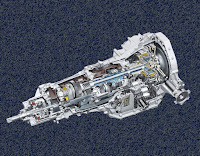The Ultimate Guide to Dual-Clutch Transmission (DCT): Advantages, Disadvantages, and Maintenance Tips
The Ultimate Guide to Dual-Clutch Transmission (DCT): Advantages, Disadvantages, and Maintenance Tips
- What is Dual-Clutch Transmission (DCT)?
- Advantages of Dual-Clutch Transmission (DCT)
- Disadvantages of Dual-Clutch Transmission (DCT)
- Maintenance Tips for Dual-Clutch Transmission (DCT)
Dual-clutch transmission (DCT) is a newer type of transmission that has gained popularity in recent years. DCT offers faster shifting, improved fuel efficiency, and a sportier driving experience. In this article, we will explore DCT in detail, including its advantages, disadvantages, and maintenance tips.
What is Dual-Clutch Transmission (DCT)?
Dual-clutch transmission (DCT) is a type of transmission that uses two separate clutches for odd and even gears. It combines the benefits of manual and automatic transmissions, providing faster gear changes and better fuel efficiency than traditional automatic transmissions while eliminating the need for manual clutch control.
DCT uses a series of computer-controlled hydraulic valves to engage and disengage the clutches, allowing for smoother and faster gear changes. When one clutch is engaged, the other is disengaged, allowing for seamless shifting between gears without any interruption in power delivery.
DCT is similar to manual transmissions in that it allows the driver to manually shift gears using either steering wheel-mounted paddle shifters or a gear shift lever. However, unlike manual transmissions, DCT can also operate in automatic mode, where the computer controls the gear changes based on driving conditions and driver input.
DCT is becoming increasingly popular in high-performance sports cars and luxury vehicles, as it provides faster and more precise gear changes than traditional automatic transmissions, improving acceleration and overall performance. DCT also offers improved fuel efficiency compared to traditional automatic transmissions, as it allows for faster and more efficient gear changes.
While DCT offers several advantages over traditional automatic transmissions, it can also be more expensive to produce and repair due to its complex design and specialized components.
Advantages of Dual-Clutch Transmission (DCT)
- Faster Shifting
- Improved Fuel Efficiency
- Better Performance
- More Responsive
- Reduced Maintenance
- Comfortable Driving
Dual-clutch transmission (DCT) has several advantages over traditional automatic and manual transmissions. Here are some of the main advantages of DCT:
Faster Shifting: One of the biggest advantages of DCT is its faster shifting. DCT can shift gears faster and more smoothly than traditional manual or automatic transmissions, which can provide a smoother and more responsive driving experience.
Improved Fuel Efficiency: DCT can improve fuel efficiency compared to traditional automatic transmissions. This is because DCT can shift gears more quickly and efficiently, reducing power losses and improving engine efficiency.
Better Performance: DCT can also provide better performance compared to traditional automatic transmissions. DCT can shift gears faster and more precisely, allowing for quicker acceleration and better handling.
More Responsive: DCT is more responsive than traditional automatic transmissions, allowing for faster and more accurate gear changes. This can be especially useful for drivers who enjoy a more engaging driving experience.
Reduced Maintenance: DCT requires less maintenance than traditional automatic transmissions. This is because DCT has fewer moving parts and does not require a torque converter, which can reduce the risk of failure and the need for repairs.
Comfortable Driving: DCT can provide a more comfortable driving experience compared to traditional manual transmissions, as it eliminates the need for manual clutch control. This can be especially beneficial for drivers who frequently drive in heavy traffic or urban environments.
Dual-Clutch Transmission (DCT) offers several advantages over traditional automatic and manual transmissions, including faster shifting, improved fuel efficiency, better performance, reduced maintenance, and a more responsive and comfortable driving experience. These advantages make DCT a popular choice among drivers who are looking for a more engaging and efficient driving experience.
Disadvantages of Dual-Clutch Transmission (DCT)
- Higher Cost
- Complex Design
- Jerky Low-Speed Driving
- Overheating
- Limited Availability
Higher Cost: One of the main disadvantages of DCT is its higher cost compared to traditional automatic transmissions. DCT is a newer technology, and its more complex design and higher production costs can make it more expensive to produce and repair.
Complex Design: DCT is a complex transmission, which can make it more difficult to repair and maintain. DCT has more moving parts and electronic controls than traditional automatic transmissions, and repairs can require specialized equipment and trained technicians.
Jerky Low-Speed Driving: DCT can sometimes result in a jerky driving experience at low speeds. This is because the transmission can sometimes struggle to find the right gear when driving at slower speeds. Some drivers may find this jerky shifting uncomfortable or annoying, especially in stop-and-go traffic.
Overheating: DCT can sometimes overheat when driven aggressively or in hot weather conditions. This can lead to reduced performance and potential damage to the transmission. To prevent overheating, drivers should avoid aggressive driving and excessive shifting, especially in hot weather conditions.
Limited Availability: While DCT is becoming more popular, it is still not as widely available as traditional automatic transmissions. This means that there may be fewer vehicle options with DCT, and repairs and maintenance can be more difficult if specialized parts or equipment are needed.
Maintenance Tips for Dual-Clutch Transmission (DCT)
- Regular Fluid Changes
- Avoid Aggressive Driving
- Regular Inspection DCT
Dual-Clutch Transmission (DCT) offers many advantages over traditional automatic transmissions, including improved fuel efficiency, faster and smoother shifting, and a longer lifespan. However, it is also more complex, can be more expensive, and may result in jerky low-speed driving and overheating. To maintain the lifespan and performance of DCT, it is important to follow regular maintenance tips, including fluid changes, avoiding aggressive driving, and regular inspection.



Comments
Post a Comment